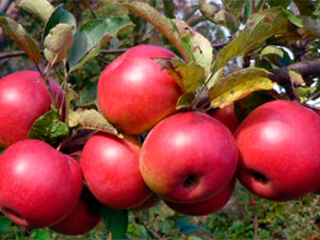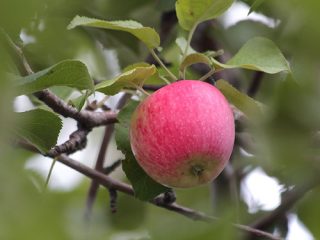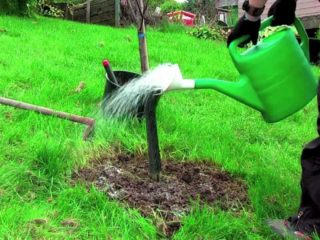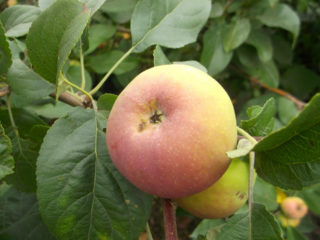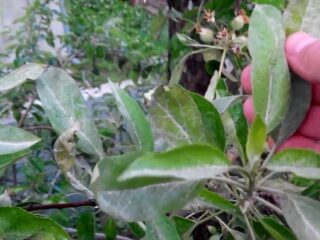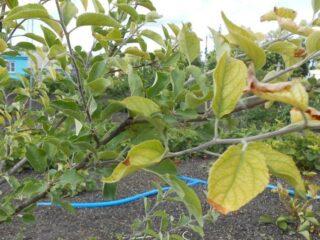Content
- 1 History of selection
- 2 Description and characteristics of the Moscow Grushovka apple tree
- 3 Advantages and disadvantages
- 4 How to plant a Moscow Grushovka apple tree
- 5 Caring for the Moscow Grushovka apple tree
- 6 Disease and pest control
- 7 Why there are no fruits on the Grushovka apple tree
- 8 When to pick Grushovka Moscow apples
- 9 Conclusion
- 10 Reviews from gardeners about the Moscow Grushovka apple tree
The Moscow Grushovka apple tree is a long-known variety that produces small but tasty and aromatic apples. It is characterized by high winter hardiness and productivity. It can be grown not only in the middle zone, but also in the North-West, in the northern regions, as well as in the Urals and Siberia.
History of selection
The Moscow Grushovka apple tree is one of the most famous ancient varieties, which was first described back in 1862 by researcher A.T. Bolotov. (magazine "Gardening"). The scientist connected the name of the variety with the surname of a resident of Tula, Grushovsky, who actively contributed to the spread of the culture. The apple tree was included in the register of breeding achievements of Russia in 1947.
During the Soviet years, the variety was studied in detail and zoned in almost all regions:
- Northwest;
- middle lane;
- Volga region;
- Volgo-Vyatsky;
- Chernozem region;
- Ural;
- Western and Eastern Siberia.
But it's the same variety. It is usually called this in the North-West, where the fruits ripen several weeks later due to climatic reasons.
Description and characteristics of the Moscow Grushovka apple tree
The Grushovka Moskovskaya apple tree variety has been studied quite well. It produces large trees with a branched crown. The fruits are small but tasty; they are used on private farms (not for sale).
Wood appearance
The description of the Early Pear Apple tree variety indicates that it is a fairly tall tree. The branches are strong, the crown has the shape of a wide pyramid, and as it matures it becomes spherical. On the main branches the bark is orange-yellow. The fruits grow on ringlets, which appear in large quantities.
The shoots are small in thickness, with slight pubescence. The color is reddish-brown. The bark is glossy, dark purple, glistening in the sun. The leaves of the Moscow Grushovka apple tree are large, green in color, and have a yellowish tint. The plate is almost flat or slightly curved, and may be slightly pubescent. Stipules are large in size.
Description of fruits
Apples of the Grushovka Moskovskaya variety are small in size (on average 80 g), bulbous in shape, and the ribbing is weakly expressed. The color is mostly yellowish, with a green tint, and fades as it ripens. There may be pink or diffuse blush with speckles. There are quite a few subcutaneous points, they are whitish.
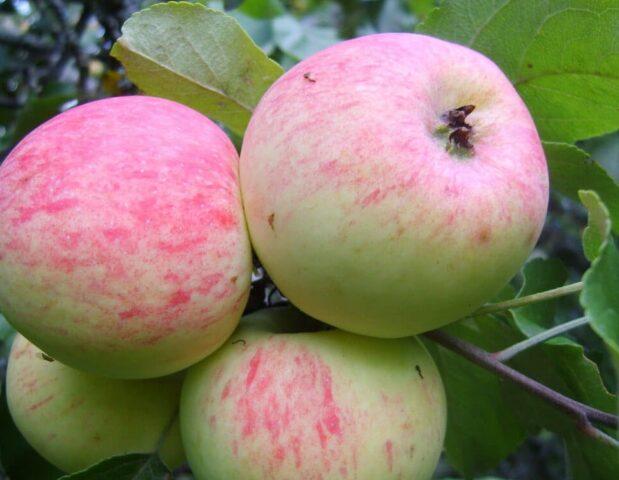
The fruits are greenish with a pink blush
The stalks are short, thick or of medium thickness. The funnel is deep and wide, there is no rust. The saucer is small in size, but wide. The cups are closed, the hearts are bulbous.Seed chambers are closed type. The seeds themselves are small and light brown in color.
The apple pulp is white and has a yellowish tint. Quite tender and aromatic. The taste of the fruits of the Moscow Grushovka apple tree is sweet and sour, refreshing, often with pronounced sourness.
Chemical composition:
- total sugar content – 9.2%;
- total acidity – 0.89%;
- vitamin C content – more than 9 mg per 100 g;
- substances with P-activity - almost 130 mg per 100 g.
Bloom
The flowers of the Moscow Grushovka apple tree are quite large, the buds are pink, and the petals are slightly lighter. They are elongated, oblong. The shape of the flowers is saucer-shaped. They appear in the second half of May, sometimes in the first ten days of June.
In terms of ripening time, the Moscow Grushovka apple tree is a summer variety. This is what it is often called in the southern regions - both names are used as synonyms. The fruits ripen from late July to mid-August, if the weather is not very warm, then with a slight delay.
Pollinators of the Grushovka Moscow apple tree
The Grushovka Moscow variety needs pollinators. The following varieties are best suited for these purposes: Bellefleur Chinese, Striped Anise, Antonovka.
What year does the Grushovka apple tree bear fruit?
Apples of the Moscow Grushovka variety appear in the fourth year after planting. But first it is better to remove the flowers, not allowing the ovaries to form. This will allow the tree to gain green mass and bear fruit steadily, starting from 5-6 years.
Productivity
The yield of the variety is very high and amounts to 80-170 kg per mature tree. Specific indicators depend on weather conditions and care. In hot weather, the yield is significantly lower, since the tree can shed some of its fruit.
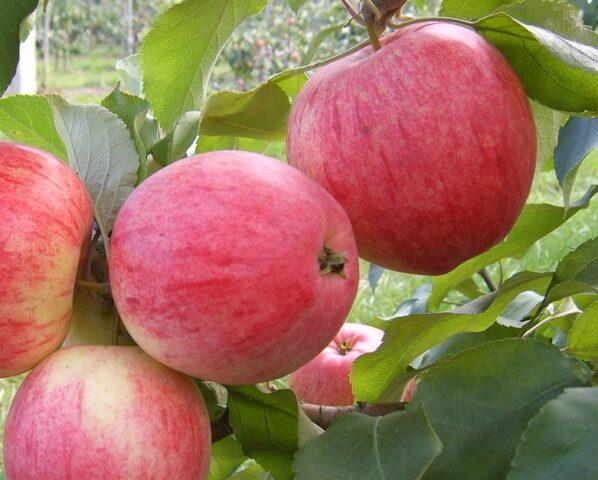
Under favorable conditions, the yield reaches 170 kg per tree
Frost resistance
The Moscow Grushovka apple tree is distinguished by its high winter hardiness. According to this indicator, it is ahead of the following varieties: Antonovka vulgaris, Borovinka and Autumn striped.
Disease resistance
With proper care, the Moscow Grushovka apple tree rarely suffers from disease. The variety is not resistant to scab. The crop may be attacked by aphids, bark beetles, spider mites and other pests. Therefore, plantings are regularly treated with fungicides and other preparations. During the fruiting period and for prevention, folk remedies are used.
Advantages and disadvantages
Moscow pear is a long-known, well-tested variety, which is often grown on private farms from the middle zone to the northern regions, the Urals and Siberia. It is characterized by high yield and good winter hardiness.
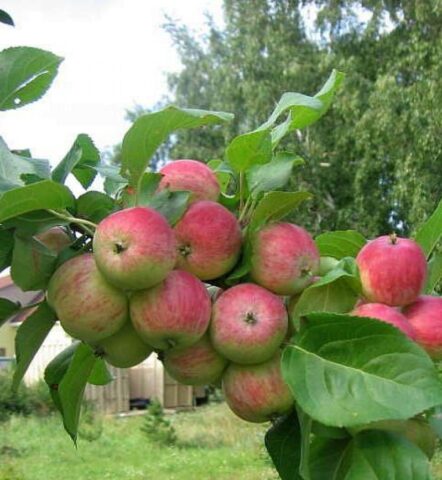
The fruits are small, but tasty and appear in large quantities
Pros:
- exceptional frost resistance (up to -50 degrees);
- high productivity;
- pleasant taste;
- a lot of vitamin C;
- fruiting from 5-6 years;
- early ripening (from the end of July).
Minuses:
- the fruits are small;
- not suitable for sale;
- do not ripen at the same time;
- keeping quality and transportability are low;
- scab resistance is low;
- Fruiting may be irregular;
- low drought resistance - in the heat the apple tree drops its fruits.
How to plant a Moscow Grushovka apple tree
Planting of the Grushovka Moskovskaya apple tree is usually planned for mid-April - early May. An additional period is the end of autumn, immediately after leaf fall. For planting, choose a sunny, dry place (not lowland, without nearby groundwater).
You need to do this:
- Dig several holes measuring 70x70 cm at a distance of 4 m from each other.
- Lay a layer of small stones.
- Plant seedlings and sprinkle with fertile soil.
- Compact the soil so that the root collar remains 5-7 cm above the surface.
- Water and mulch.
Caring for the Moscow Grushovka apple tree
Caring for an apple tree is not very difficult:
- Water twice a month, weekly during drought.
- Fertilizers - urea in spring (40 g per tree), during the formation of ovaries - superphosphate (80 g) and potassium salt (50 g), in autumn - wood ash (300 g).
- Regular pruning in spring and autumn.
- Weeding, loosening - as necessary.
- Mulching the tree trunk circle for the winter (for young seedlings).
Disease and pest control
The Moscow Grushovka apple tree has normal immunity, but can suffer from scab, especially in rainy and cool summers. It is also possible that it may be affected by other fungal diseases. For prevention and treatment, it is necessary to treat with fungicides:
- "Ordan";
- "Horus";
- "Bordeaux mixture";
- "Topaz";
- "Tattu."
To destroy aphids, bark beetles and others, the Moscow Grushovka apple tree is sprayed with insecticides:
- "Biotlin";
- "Fufanon";
- "Match";
- "Vertimek";
- "Inta-Vir" and others.
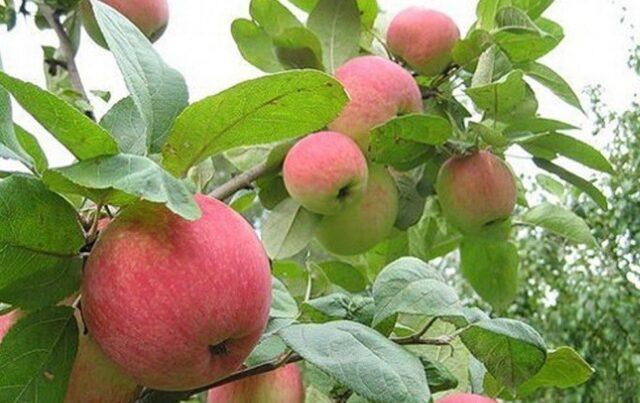
In order for a tree to bear fruit well, it must be regularly treated against pests and diseases.
Why there are no fruits on the Grushovka apple tree
Sometimes gardeners are faced with such a problem - the Moscow Grushovka apple tree blooms, but does not bear fruit. The reasons may be different:
- excess nitrogen fertilizers;
- the pollinator variety does not grow nearby;
- the weather is too hot;
- flower buds are affected by pests.
Almost all of these factors can be influenced.If the weather is too hot, it is recommended to increase watering and regularly irrigate the crown in the evening. Otherwise, the apple tree may drop its fruits and the yield will drop significantly. Even if this happens, the tree will bear fruit again in subsequent seasons.
When to pick Grushovka Moscow apples
You can start harvesting apples from late July to early August. Ripening is not simultaneous, so harvesting is carried out in several stages. The fruits are not transportable and deteriorate during long-term transportation. Keeping quality is also low - no more than 3-4 weeks even if storage conditions are met:
- temperature – +2-6 °C;
- humidity – 60-70%;
- dark place.
The collected fruits are immediately eaten or sent for preparations - compotes, juices and other dishes.
Conclusion
The Moscow Grushovka apple tree is unpretentious and grows well in different regions. The crop can be cultivated on different types of soil, preferably in sunny areas. Apples are harvested in August. Since the harvest is large, winter preparations are often made from the fruits.
Reviews from gardeners about the Moscow Grushovka apple tree
